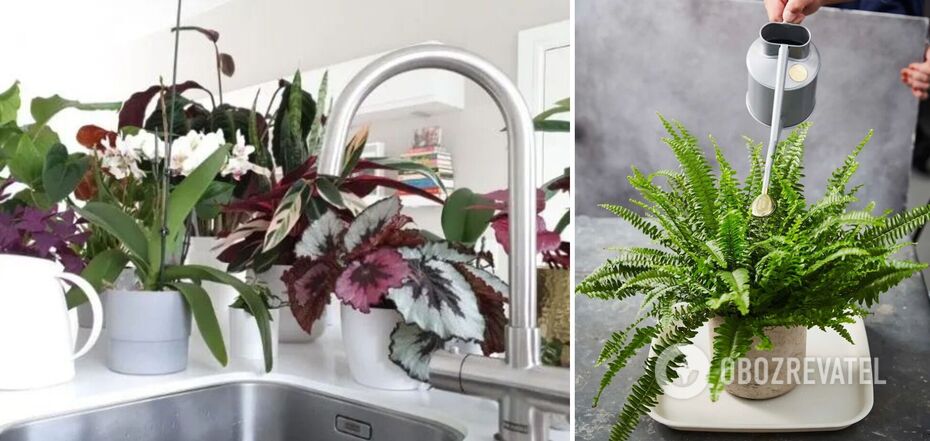Life
Is it possible to water flowers with tap water: tips for beginners
Many newcomers to growing flowers on the windowsill make the same mistake - they take water from the tap and immediately water their flowerpots with it. And then they persistently look for the reason why the plants are not feeling well. In fact, it would be better to start cultivating your own home jungle by asking yourself why you shouldn't water your flowers with tap water.
OBOZREVATEL has collected some tips on how to properly water indoor plants. And what to do with tap water to improve its quality.
Why tap water is not suitable for plants
The first reason is, of course, chlorine, which is used to disinfect water. It is too toxic and can poison your flowers. And no matter how much you try to provide them with the perfect lighting and temperature conditions, they will not grow well.
And the second reason why you shouldn't water your flowers with water straight from the tap is its hardness. A large amount of metal salts contained in it has an extremely negative effect on the condition of the soil. So, the principle here is simple: if you don't drink water straight from the tap, then it's not suitable for flowerpots either.
How to make tap water suitable for watering plants
The first idea that comes to mind is to boil it and then cool it. Yes, this will remove a significant part of the salts from the water (they will settle in the kettle as scale), and it will also disinfect it. But at the same time, it will lose a significant portion of the oxygen that the roots need so much. Therefore, in any case, tap water - whether raw or boiled - needs to be settled.
Boiled water just needs to be allowed to "breathe" for a few days and it will absorb enough oxygen again - the water is ready for irrigation. With raw water, things are a little more complicated. During settling, heavy microparticles such as metal salts will settle to the bottom of the container. This will make the upper layers of water much softer. In addition, it will warm up to room temperature, which is very good because plants do not tolerate cold watering. But you will need to collect it carefully so as not to mix the settled water with the sediment again. In addition, you need to store such water in an open state so that chlorine evaporates from it. Therefore, the container will have to be monitored so that it is not accidentally knocked over by pets or children. But in general, as you can see, no extraordinary efforts will be required from you.
What about filtered water?
Filtered water is a great option for caring for indoor plants. It doesn't matter whether you pass it through a stationary filter, use a jug with a filter cassette, or buy ready-made purified water. The only disadvantage of this method is that it is quite expensive compared to self-settlement. However, the joy of contemplating a lush garden on the windowsill is well worth it.
Previously OBOZREVATEL published detailed instructions on how to deal with the intricacies of watering of indoor plants.
Subscribe to OBOZREVATEL's Telegram and Viber channels to keep up with the latest news.



























